Related Research Articles
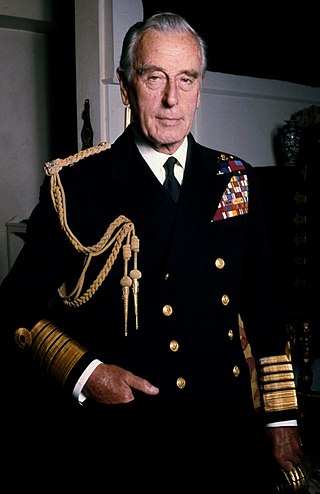
Admiral of the Fleet Albert Victor Nicholas Louis Francis Mountbatten, 1st Earl Mountbatten of Burma was a British statesman, naval officer, colonial administrator and close relative of the British royal family. He was born in the United Kingdom to the prominent Battenberg family. He was a maternal uncle of Prince Philip, Duke of Edinburgh, and a second cousin of King George VI. He joined the Royal Navy during the First World War and was appointed Supreme Allied Commander, South East Asia Command, in the Second World War. He later served as the last Viceroy of India and briefly as the first Governor-General of the Dominion of India.

Joseph Warren "Vinegar Joe" Stilwell was a United States Army general who served in the China Burma India Theater during World War II. An early American popular hero of the war for leading a column walking out of Burma pursued by the victorious Imperial Japanese Armed Forces, his implacable demands for units debilitated by disease to be sent into heavy combat resulted in Merrill's Marauders becoming disenchanted with him. Infuriated by the 1944 fall of Changsha to a Japanese offensive, Stilwell threatened the Chinese Nationalist leader, Chiang Kai-shek, that lend-lease aid to China would be cut off, which made Ambassador Patrick J. Hurley decide that Stilwell had to be replaced. Chiang had been intent on keeping Lend-Lease supplies to fight the Chinese Communist Party, but Stilwell had been obeying his instructions to get the Communists and the Nationalists to co-operate against Japan.
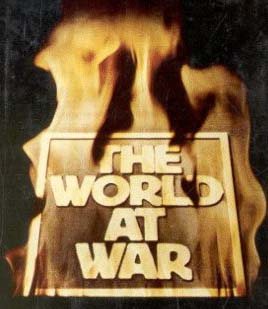
The World at War is a 26-episode British documentary television series that chronicles the events of the Second World War. It was produced in 1973, at a cost of £900,000, the most expensive factual series ever produced. It was produced by Jeremy Isaacs, narrated by Laurence Olivier and included music composed by Carl Davis. The book, The World at War, published the same year, was written by Mark Arnold-Forster to accompany the TV series.
The 11th Army Group was the main British Army force in Southeast Asia during the Second World War. Although a nominally British formation, it also included large numbers of troops and formations from the British Indian Army and from British African colonies, and also Nationalist Chinese and United States units.

Mandalay is the second-largest city in Myanmar, after Yangon. Located on the east bank of the Irrawaddy River, 631 km north of Yangon, the city has a population of 1,225,553.

The British Fourteenth Army was a multi-national force comprising units from Commonwealth countries during the Second World War. As well as British Army units, many of its units were from the Indian Army and there were also significant contributions from the British Army's West and East African divisions. It was often referred to as the "Forgotten Army" because its operations in the Burma campaign were overlooked by the contemporary press, and remained more obscure than those of the corresponding formations in Europe for long after the war. For most of the Army's existence, it was commanded by Lieutenant-General William Slim.

South East Asia Command (SEAC) was the body set up to be in overall charge of Allied operations in the South-East Asian Theatre during the Second World War.

The Burma campaign was a series of battles fought in the British colony of Burma. It was part of the South-East Asian theatre of World War II and primarily involved forces of the Allies against the invading forces of the Empire of Japan. Imperial Japan was supported by the Thai Phayap Army, as well as two collaborationist independence movements and armies. Nominally independent puppet states were established in the conquered areas and some territories were annexed by Thailand. In 1942 and 1943, the international Allied force in British India launched several failed offensives to retake lost territories. Fighting intensified in 1944, and British Empire forces peaked at around 1 million land and air forces. These forces were drawn primarily from British India, with British Army forces, 100,000 East and West African colonial troops, and smaller numbers of land and air forces from several other Dominions and Colonies. These additional forces allowed the Allied recapture of Burma in 1945.

Patricia Edwina Victoria Knatchbull, 2nd Countess Mountbatten of Burma, Baroness Brabourne,, was a British peeress and a third cousin of Queen Elizabeth II. She was the elder daughter of Admiral of the Fleet the 1st Earl Mountbatten of Burma and of heiress Edwina Ashley. She was the elder sister of Lady Pamela Hicks, a first cousin of Prince Philip, Duke of Edinburgh, and the last surviving baptismal sponsor to King Charles III. She was a great-great-granddaughter of Queen Victoria.
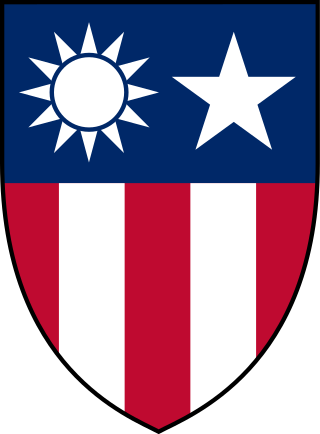
China Burma India Theater (CBI) was the United States military designation during World War II for the China and Southeast Asian or India–Burma (IBT) theaters. Operational command of Allied forces in the CBI was officially the responsibility of the Supreme Commanders for South East Asia or China. In practice, U.S. forces were usually overseen by General Joseph Stilwell, the Deputy Allied Commander in China; the term "CBI" was significant in logistical, material and personnel matters; it was and is commonly used within the US for these theaters.

Edwina Cynthia Annette Mountbatten, Countess Mountbatten of Burma,, was an English heiress, socialite, relief worker and the last vicereine of India as the wife of Rear Admiral The 1st Viscount Mountbatten of Burma.
John Alfred Terraine, FRHistS was an English military historian and TV screenwriter. He is best known as the lead screenwriter for the landmark 1960s BBC-TV documentary The Great War, about the First World War, and for his defence of British General Douglas Haig – who commanded the British Expeditionary Force on the Western Front from late 1915 until the end of the war – against charges that he was "The Butcher of the Somme".

The British colonial rule in Burma lasted from 1824 to 1948, from the successive three Anglo-Burmese wars through the creation of Burma as a province of British India to the establishment of an independently administered colony, and finally independence. The region under British control was known as British Burma, and officially known as Burma from 1886. Various portions of Burmese territories, including Arakan and Tenasserim, were annexed by the British after their victory in the First Anglo-Burmese War; Lower Burma was annexed in 1852 after the Second Anglo-Burmese War. The annexed territories were designated the minor province of British Burma in 1862.
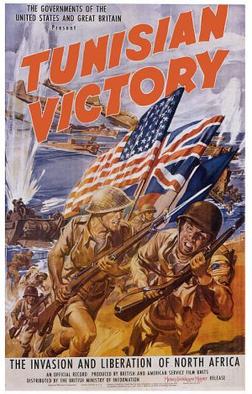
Tunisian Victory is a 1944 Anglo-American propaganda film about the victories in the North Africa Campaign.

The Japanese occupation of Burma was the period between 1942 and 1945 during World War II, when Burma was occupied by the Empire of Japan. The Japanese had assisted formation of the Burma Independence Army, and trained the Thirty Comrades, who were the founders of the modern Armed Forces (Tatmadaw). The Burmese hoped to gain support of the Japanese in expelling the British, so that Burma could become independent.

Desert Victory is a 1943 film produced by the British Ministry of Information, documenting the Allies' North African campaign against Field Marshal Erwin Rommel and the Afrika Korps. This documentary traces the struggle between General Erwin Rommel and Field Marshal Bernard Montgomery, from the German's defeat at El Alamein to Tripoli. The film was produced by David MacDonald and directed by Roy Boulting who also directed Tunisian Victory and Burma Victory. Like the famous "Why We Fight" series of films by Frank Capra, Desert Victory relies heavily on captured German newsreel footage. Many of the most famous sequences in the film have been excerpted and appear with frequency in History Channel and A&E productions. The film won a special Oscar in 1943 and the 1951 film The Desert Fox: The Story of Rommel took sections of the film for its battle footage.
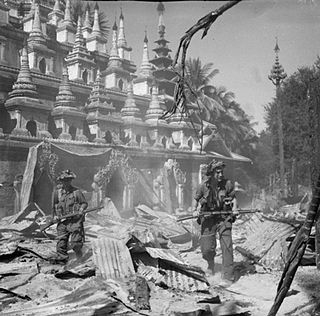
The Burma campaign in the South-East Asian Theatre of World War II was fought primarily by British Commonwealth, Chinese and United States forces against the forces of Imperial Japan, who were assisted by the Burmese National Army, the Indian National Army, and to some degree by Thailand. The British Commonwealth land forces were drawn primarily from the United Kingdom, British India and Africa.

The Third Anglo-Burmese War, also known as the Third Burma War, took place during 7–29 November 1885, with sporadic resistance continuing into 1887. It was the final of three wars fought in the 19th century between the Burmese and the British. The war saw the loss of sovereignty of an independent Burma under the Konbaung dynasty, whose rule had already been reduced to the territory known as Upper Burma, the region of Lower Burma having been annexed by the British in 1853, following the Second Anglo-Burmese War.
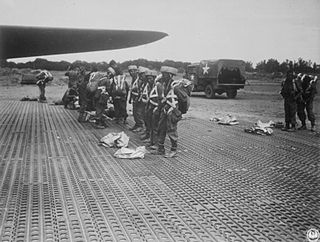
The Battle of Elephant Point was an airborne operation at the mouth of the Rangoon River conducted by a composite Gurkha airborne battalion that took place on 1 May 1945. In March 1945, plans were made for an assault on Rangoon, the capital of Burma, as a stepping-stone on the way to recapturing Malaya and Singapore. Initial plans for the assault on the city had called for a purely land-based approach by British Fourteenth Army, but concerns about heavy Japanese resistance led to this being modified with the addition of a joint amphibious-airborne assault. This assault, led by 26th Indian Division, would sail up the Rangoon River, but before it could do so, the river would have to be cleared of Japanese and British mines. In order to achieve this, coastal defences along the river would have to be neutralized, including a battery at Elephant Point.